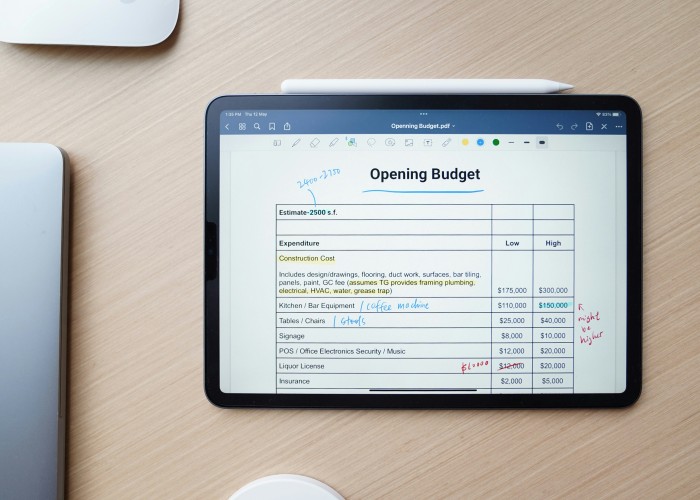Creating a monthly budget can feel overwhelming—especially when your income fluctuates or your expenses seem unpredictable. But the truth is, a realistic and sustainable budget is the foundation of financial control. It helps you stay out of debt, plan for the future, and reduce stress. The good news? You don’t need to be a certified financial planner or a chartered financial advisor to make a plan that works. How to Create a Monthly Budget That Actually Works.
This guide from the FINANCIAL ADVISOR USA BLOG will walk you through the process of building a monthly budget that’s easy to follow, sustainable, and tailored to your lifestyle. Whether you’re just starting your financial journey or trying to regain control, these steps can help you move forward.
Why Budgeting Matters More Than Ever
Many people associate budgeting with restriction—but in reality, it’s about freedom. Knowing exactly where your money goes allows you to make informed decisions about your spending. You’ll avoid surprise overdraft fees, eliminate unnecessary expenses, and start seeing actual savings stack up.
Financial experts like investment advisors and independent financial advisors agree that budgeting is the first step toward building long-term wealth. And while they can help you develop advanced plans, even a general budgeting framework can lead to smarter financial choices.
Step 1: Know Your Income (After Taxes)
Start by calculating your monthly take-home income—this is what actually lands in your account after deductions like taxes, health insurance, and retirement contributions.
If you have a steady paycheck, this is easy. But if your income varies (such as from freelance work, commissions, or multiple side gigs), take the average of your last 3-6 months. It’s better to underestimate than overestimate.
Pro Tip: If you’re unsure how to track your income, tools like spreadsheets or budgeting apps can simplify the process.
Step 2: Track and Categorize Your Expenses
Before creating a plan, you need to know where your money currently goes. Spend at least one month tracking every single expense—even that quick coffee run or online subscription.
Group your expenses into categories like:
- Fixed expenses: Rent, mortgage, insurance, loan payments
- Variable expenses: Groceries, utilities, gas
- Discretionary spending: Entertainment, dining out, shopping
- Irregular expenses: Gifts, repairs, annual fees
Many financial consultants suggest reviewing 2–3 months of expenses to identify patterns. This step often reveals opportunities for savings that you didn’t realize existed. How to Create a Monthly Budget That Actually Works.
Step 3: Set Clear Financial Goals
Without goals, a budget can feel aimless. Ask yourself what you’re trying to achieve financially. Some common goals include:
- Building an emergency fund
- Paying off debt
- Saving for a vacation or big purchase
- Contributing to a retirement account
- Investing for long-term growth
Good financial advisors always align budgeting plans with personal goals. You should too. Make sure your goals are specific, measurable, and time-bound so you can stay motivated.
Step 4: Choose a Budgeting Method That Suits You
There’s no one-size-fits-all budgeting method. What works for your friend might not work for you. Here are a few popular options:
The 50/30/20 Rule
- 50% of income for needs
- 30% for wants
- 20% for savings and debt repayment
Simple and beginner-friendly, this method keeps you mindful of priorities.
Zero-Based Budget
Every dollar has a job. You assign every dollar of your income to an expense, savings goal, or debt repayment—leaving nothing unaccounted for. Great for people who want full control.
Envelope System (Cash-Based)
You allocate cash into labeled envelopes (e.g., groceries, gas). When the envelope is empty, spending stops. This method works best for those who struggle with card spending.
The goal is to choose a method that matches your style and commitment level. Learn more tips and strategies on our blog.
Step 5: Include Savings and Emergency Funds
A budget that works must include a savings component. Aim to set aside at least 10-20% of your income if possible. Split this into:
- Emergency Fund: Ideally 3–6 months of expenses
- Short-Term Savings: For goals like a new phone or car
- Long-Term Savings: College funds, retirement, investments
Even small monthly contributions make a big difference over time. Certified financial advisors often recommend automating these savings to make it effortless.
Step 6: Plan for Irregular Expenses
Unexpected costs are one of the biggest budget breakers. But most of them aren’t truly unexpected—they’re just infrequent.
Think ahead to expenses like:
- Car maintenance
- Holiday gifts
- Annual insurance premiums
- Medical co-pays
Divide the total yearly estimate of these costs by 12, and set aside that amount monthly. This habit can prevent credit card debt or last-minute panic. How to Create a Monthly Budget That Actually Works.
Step 7: Review and Adjust Monthly
Life changes—and so should your budget. Schedule a monthly review session (it doesn’t have to take long). Ask:
- Did I stay within my categories?
- Were there unexpected expenses?
- Do I need to adjust anything for next month?
Even the best financial advisors know that budgeting isn’t set in stone. Flexibility is key. You might find that your grocery budget is too tight or you underestimated transportation costs. Adjust accordingly.
Step 8: Cut Back on Non-Essentials
Now that you’ve tracked your expenses, chances are you’ll find areas where you’re overspending. Maybe it’s streaming services, takeout, or shopping. You don’t have to eliminate everything—but be intentional.
Try this:
- Cancel unused subscriptions
- Cook more meals at home
- Set a weekly limit for impulse buys
Smart choices now mean more freedom later.
Step 9: Use Tools to Stay on Track
Budgeting doesn’t need to be manual. Use tools like:
- Spreadsheet templates
- Budgeting apps (many are free)
- Bank alerts and trackers
- Goal-setting apps for savings
Even independent financial advisors often use digital tools to help clients stay on target. These can simplify your life and reduce the burden of memory or discipline.
Step 10: Keep Learning and Stay Motivated
Financial literacy is a journey. The more you learn, the more empowered you’ll feel. Read books, follow financial blogs, and stay updated on strategies that help you grow.
You can explore more tips and advice at our About Us page, where we share our mission of delivering helpful and practical financial information for everyone.
Final Thoughts
You don’t need a chartered financial planner or a certified financial advisor to take control of your money. You just need a clear plan, discipline, and a willingness to stick with it. Start small, stay consistent, and allow your budget to evolve with your life. How to Create a Monthly Budget That Actually Works.






Leave a Reply